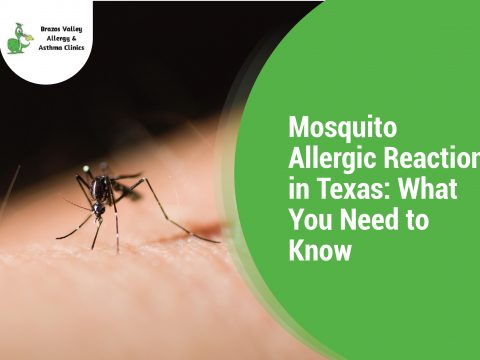- 979-485-9287
- office@bvallergy.com
-
 979-251-7804
979-251-7804
Common Pet Allergy Symptoms and How to Recognize Them

Food Allergies vs. Intolerance: What’s the Real Culprit?
April 5, 2024
Gluten Intolerance, Celiac Disease, or a Wheat Allergy
May 7, 2024You’re not alone if you’re one of the people who dreamt of having a loyal companion by your side, wishing that the saying “a dog is a man’s best friend” holds true. But what if the mere thought of cuddling up to a pet sets off a sneezing frenzy?
Despite scrolling through pictures of adorable puppies or imagining the joy they’ll bring, you face reality—allergies. If these scenarios resonate with you, you’re not alone. Pet allergies are a common concern for a considerable number of people, and understanding the symptoms is the first step toward finding relief. Gain insights into managing and treating your allergies head-on, enabling you to bond with a feline without any hindrance.
Understanding Pet Allergies
Understanding pet allergies is not just about knowing why your body reacts negatively to the pets you adore. It’s about empowering yourself with the knowledge to help you manage and prevent these allergies. Dive into the intricacies of pet allergies and explain why they occur.
Why Do Some People Develop Allergies to Pets?
1. Genetic Predisposition
Your genetic makeup is a significant factor in determining whether you’ll develop allergies to pets. If one or both of your parents have allergies, you’re more likely to inherit the tendency to develop them yourself. This is not your fault; it’s just like inheriting your eye color or hair texture – genetic traits can predispose you to specific allergic reactions.
2. Environmental Factors
While genetics lay the foundation, environmental factors may also influence the development of pet allergies. Being around pets can cause an immune reaction in some people who are sensitive to substances like proteins in their skin flakes (dander), saliva, and urine. Even if you didn’t grow up with pets, prolonged exposure to these allergens in your environment may sensitize your immune system over time, leading to allergies.
Understanding how genetics and environmental elements interact can give you the tools to handle your pet allergies effectively. While you can’t control your genetic predisposition, you can reduce exposure to pet allergens, minimizing allergic reactions.
Recognizing Common Symptoms of Pet Allergies
-
Sneezing
If you reach for tissues every time you’re around pets, it could be a sign of pet allergies. Sneezing is your body’s way of expelling the allergens irritating your nasal passages.
-
Itching
Persistent itching, particularly in the nose, throat, and eyes, is a common symptom of pet skin allergies. After pet exposure, you might notice that your eyes become red and itchy or that your throat feels scratchy.
-
Wheezing
Difficulty breathing or a wheezing sound in the chest may indicate a more severe allergic reaction to pet dander. Wheezing occurs when your airways constrict in response to allergens, making breathing harder.
Understanding the Difference Between Allergy Symptoms and a Common Cold

1. Duration
Allergy symptoms persist as long as you’re exposed to the allergen, whereas a cold typically lasts for a week or two and then resolves on its own.
2. Fever
While colds often come with a low-grade fever, allergies do not typically cause a rise in body temperature.
3. Timing
Allergy symptoms may worsen during specific seasons when certain allergens are prevalent, whereas colds can occur at any time of the year.
Read More: Is It a Cold or Allergies?
Lesser-Known Symptoms of Pet Allergies
-
Red, Watery Eyes
Allergic conjunctivitis may cause your eyes to become red, watery, and itchy after exposure to pet dander. This symptom is often mistaken for eye fatigue or irritation.
Read More: Allergic Conjunctivitis: Causes, Symptoms, and Triggers
-
Nasal Congestion
Chronic nasal congestion or a stuffy nose, especially around pets, may indicate an allergic reaction. Sneezing and a runny nose may accompany the congestion.
-
Skin Reactions
After exposure to pet allergens, certain people might experience skin responses like hives, eczema, or a rash. These reactions may vary in severity and appear as red, inflamed patches on the skin.
-
Respiratory Distress
In extreme situations, being around pet allergens could lead to asthma symptoms like coughing, wheezing, and feeling tightness in the chest.
Pet Allergy Treatment Options
Pet allergies may be a nuisance, but finding relief is possible with the proper medication. Let’s break down your options for pet allergy treatment:
1. Antihistamines
These are your go-to warriors against allergy symptoms like sneezing, itching, and watery eyes. Over-the-counter options like loratadine and cetirizine may provide quick relief. Prescription-strength antihistamines like fexofenadine may be necessary for more severe symptoms.
2. Decongestants
When nasal congestion is your main adversary, decongestants like pseudoephedrine may rescue you. These drugs reduce the size of inflamed nasal passages, making breathing simpler. However, they should be used cautiously, especially for individuals with high blood pressure or heart conditions.
3. Nasal Sprays
For targeted relief, nasal sprays may deliver medication directly to the source of your symptoms. Corticosteroid sprays like fluticasone and budesonide reduce inflammation in the nasal passages, providing long-lasting relief from congestion and sneezing.
Seeking professional advice is not just a suggestion; it’s crucial when managing pet allergies. An allergist will evaluate your symptoms, medical background, and daily habits to suggest the best treatment strategy. This ensures you get the best allergy medicine for pet allergies and reduces the risk of self-medication.
Unveiling the Power of Pet Allergy Immunotherapy
While medications offer temporary relief, immunotherapy presents a promising long-term solution for pet allergies.
Immunotherapy, commonly called allergy shots, involves giving small amounts of allergens to the body over time. This helps the immune system become less sensitive to those allergens. Over time, the body learns to tolerate the allergen, reducing or eliminating allergic reactions.
How Does it Work?
Immunotherapy works by retraining your immune system’s response to pet allergens. Initially, you’ll receive injections containing tiny amounts of pet dander extract. With each dose, your body builds up tolerance, eventually reaching a point where exposure to pets no longer triggers allergic symptoms.
Benefits of Immunotherapy
Unlike medications that merely alleviate symptoms, immunotherapy addresses the root cause of pet allergies. This offers lasting relief even after treatment completion. It’s a secure and efficient choice for people of any age, even children, offering the promise of a life without concerns about pet allergies.
Embracing a Life Free from Pet Allergy Worries
You’ve uncovered the secrets of pet allergies, from recognizing symptoms to treatment options. Armed with this information, you can confidently pursue pet ownership dreams or enjoy the company of pets without allergic discomfort.
Remember, Brazos Valley Allergy and Asthma Clinic, our clinic in Giddings, TX, is here to support you every step of the way, offering customized care and tailored solutions designed to meet your specific needs.
Call us at 979-485-9287 or click the “Book an Appointment” button to talk to us today. Say goodbye to sneezing fits and hello to the joy of pet companionship—your allergy-free journey starts now!




